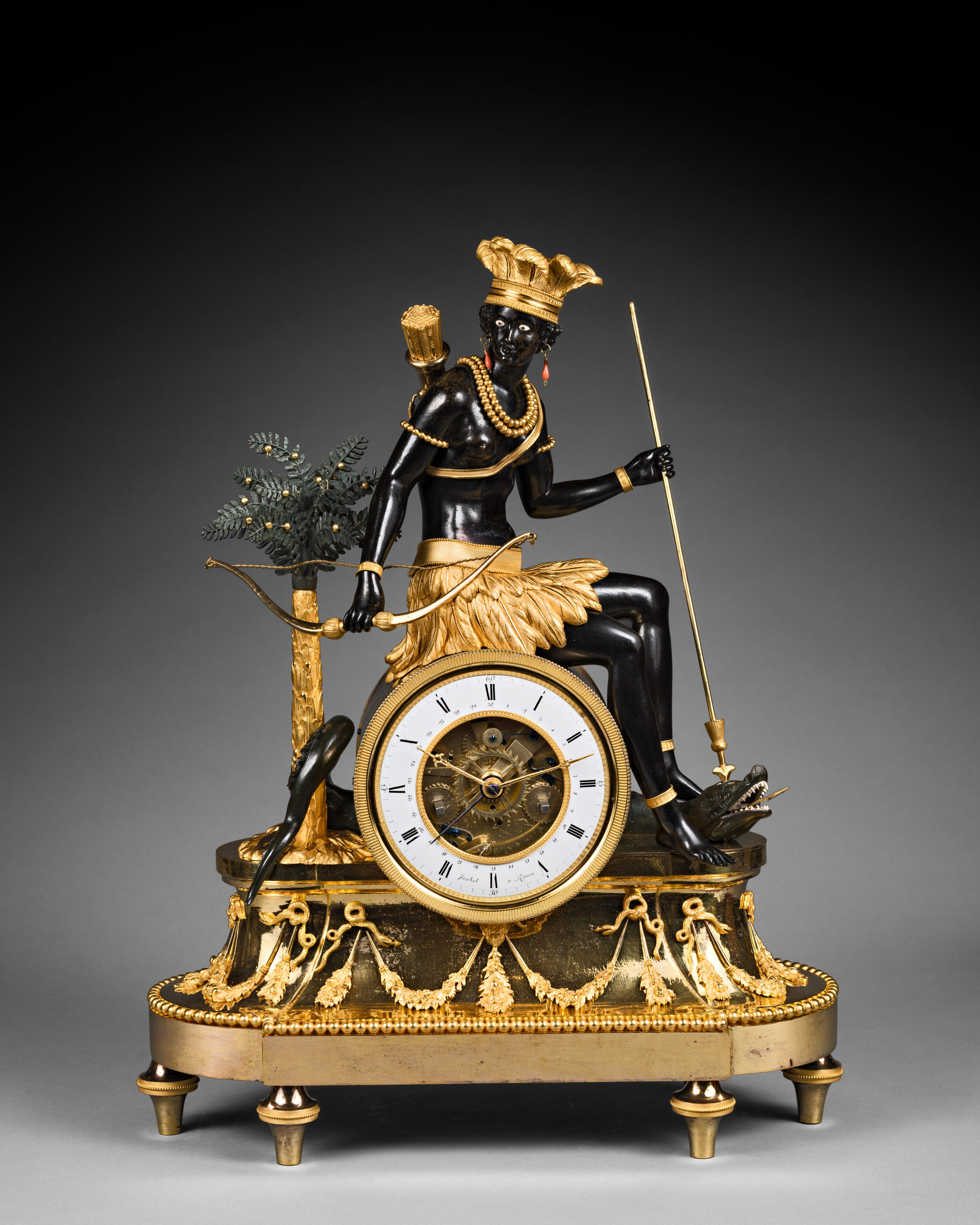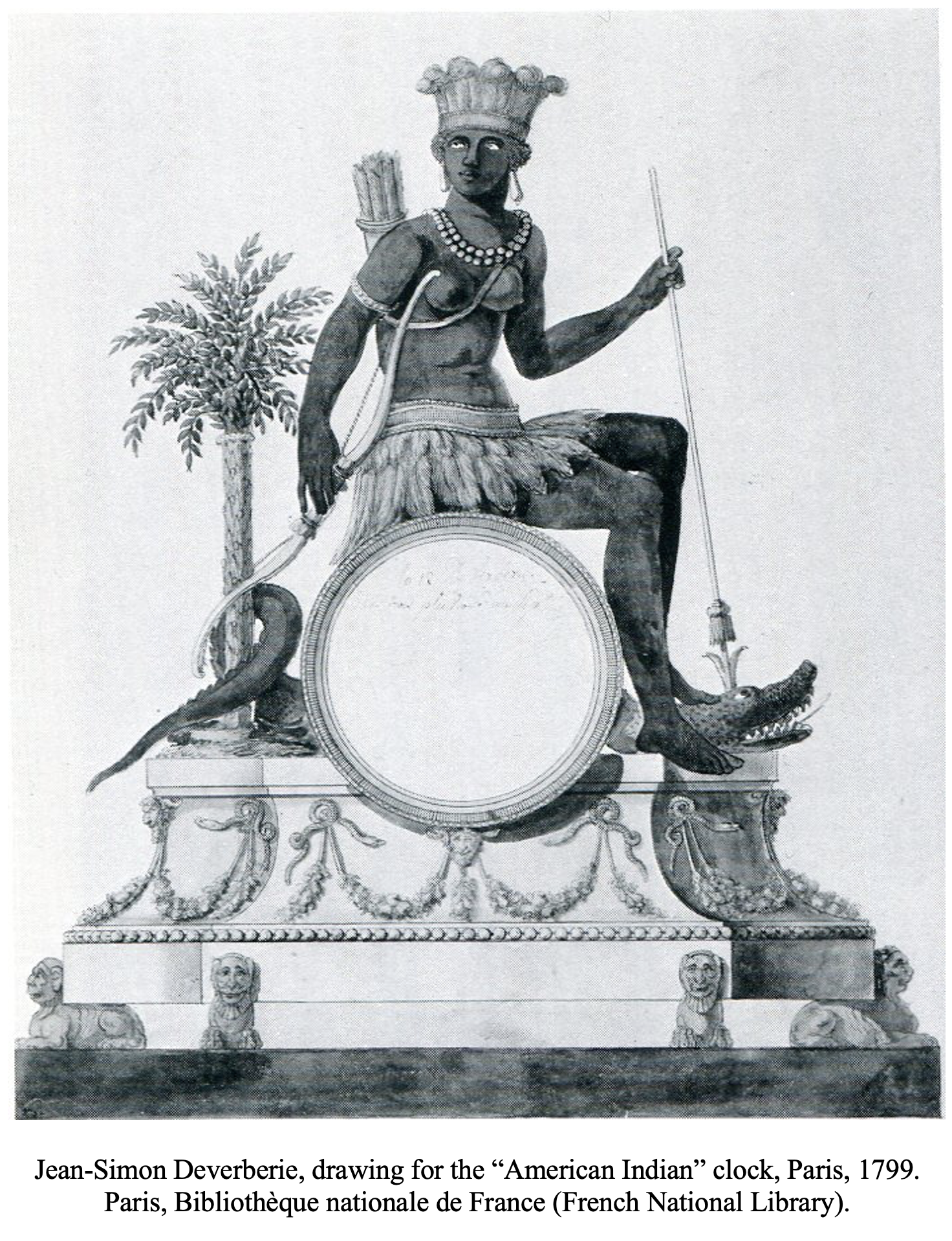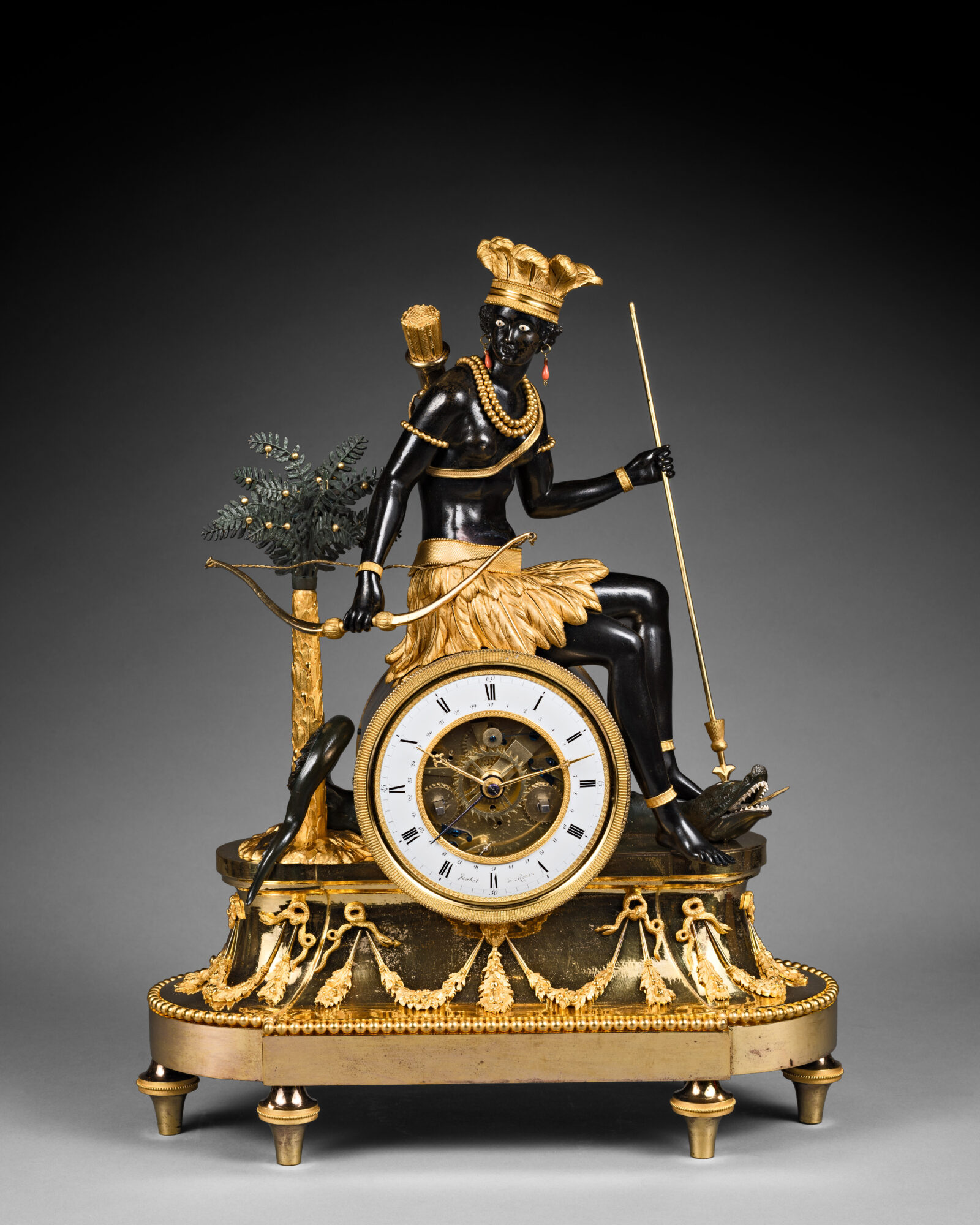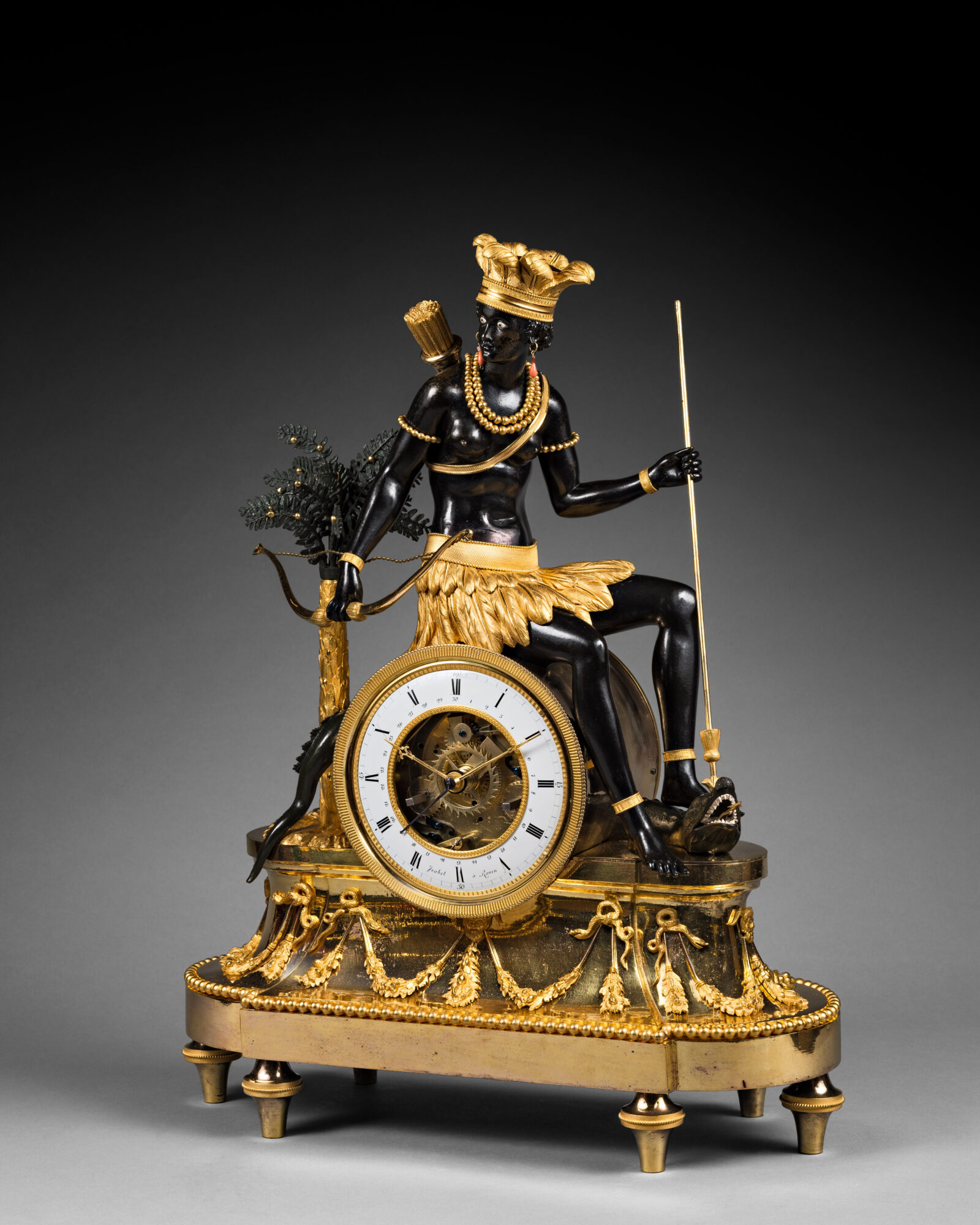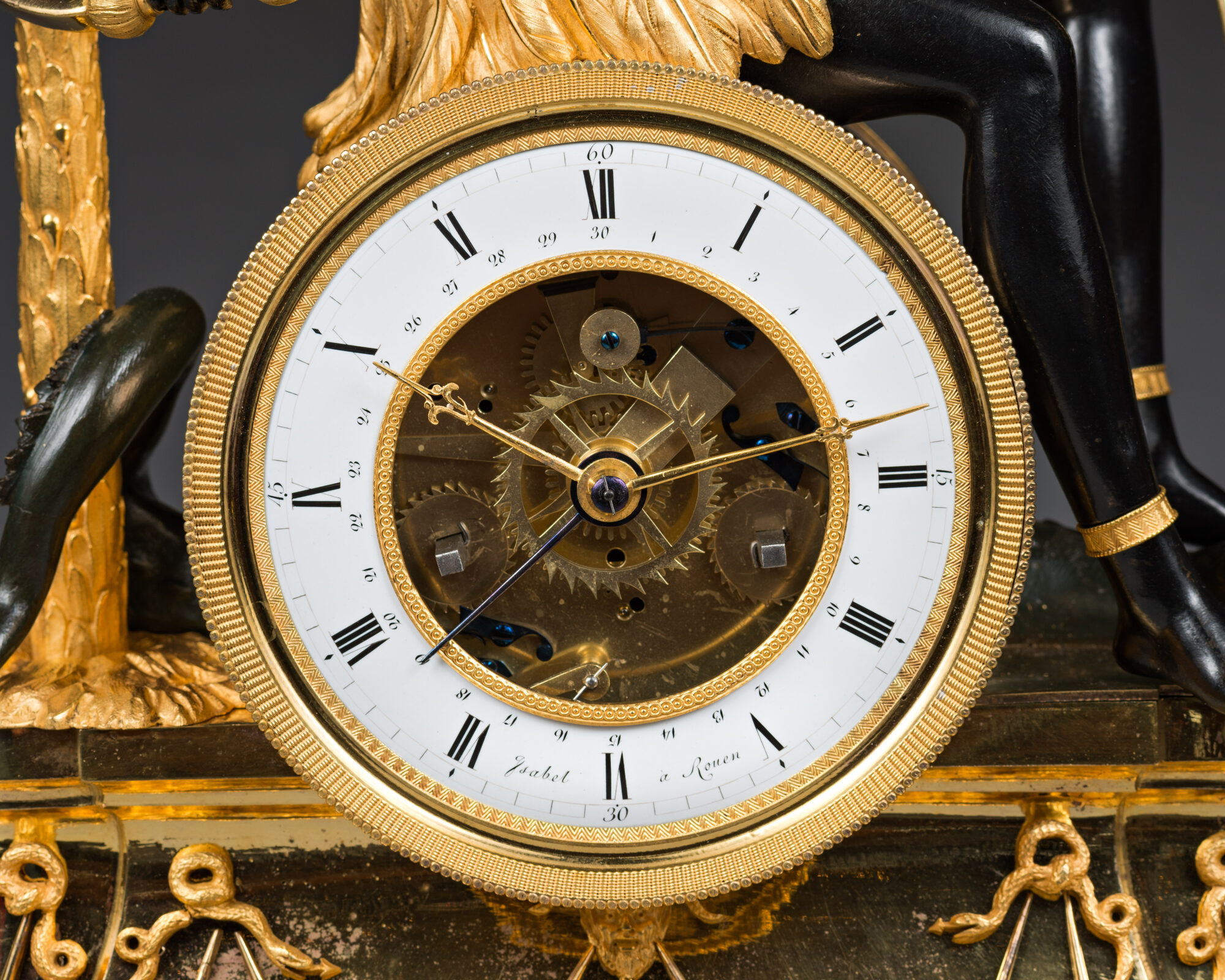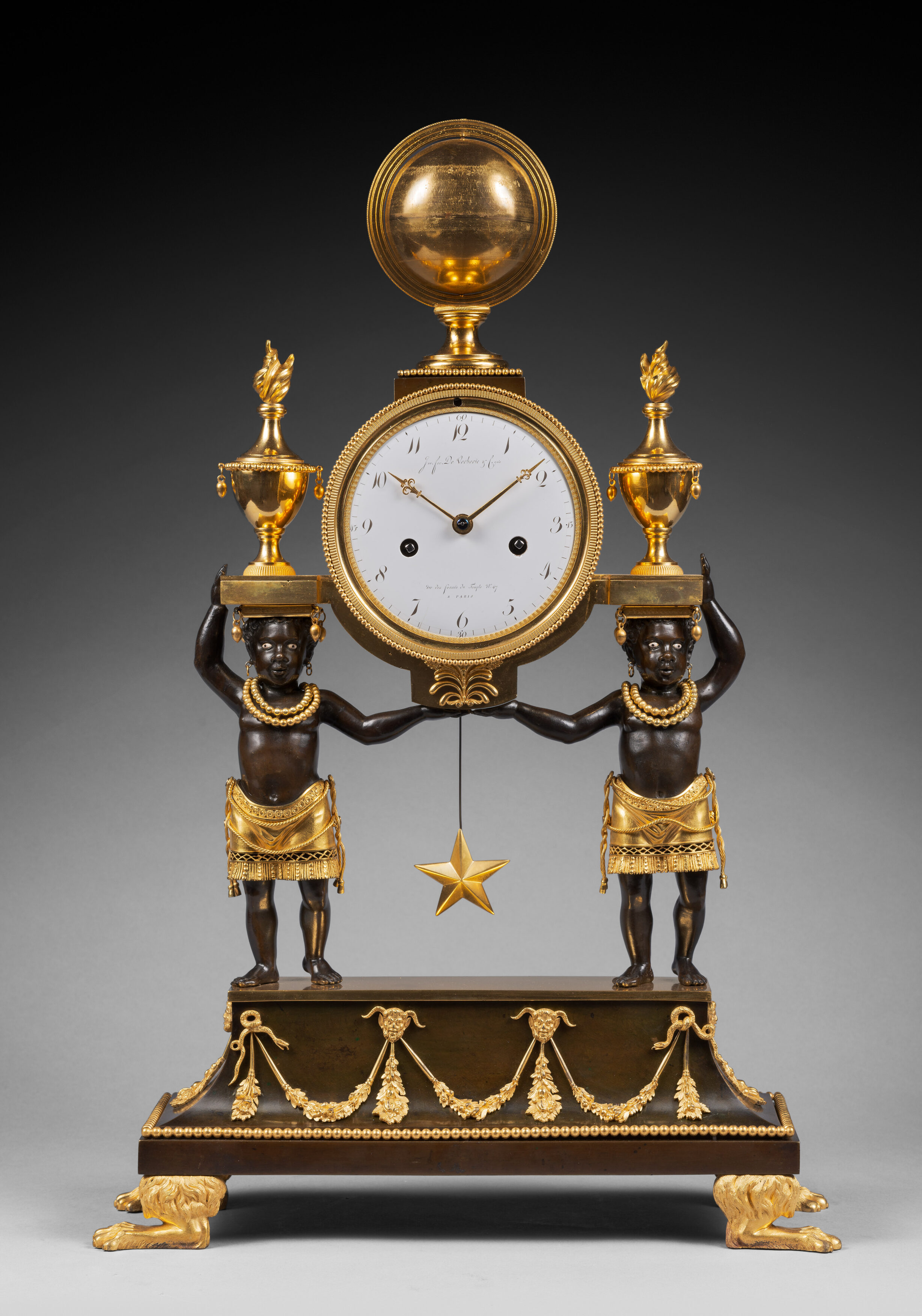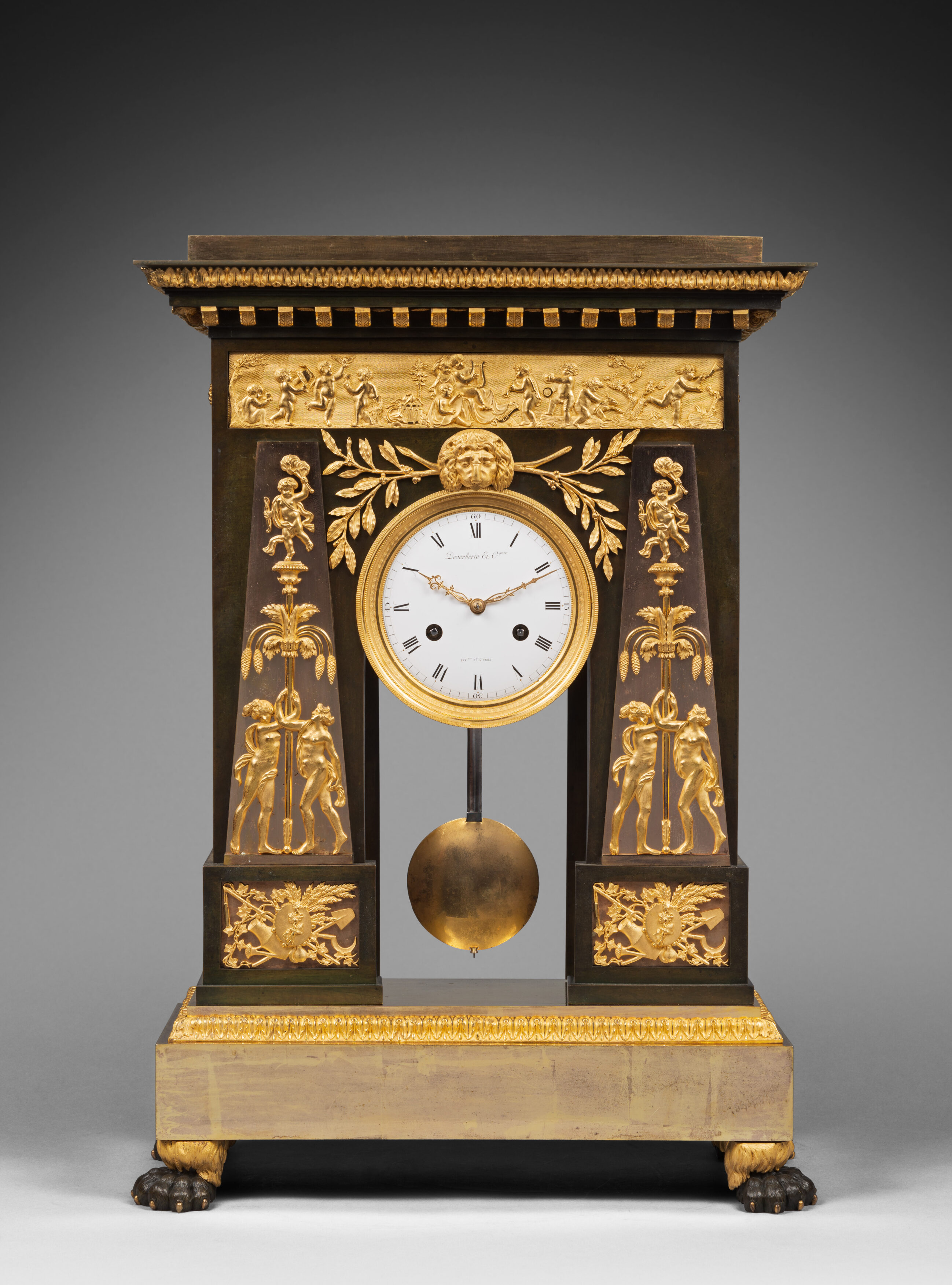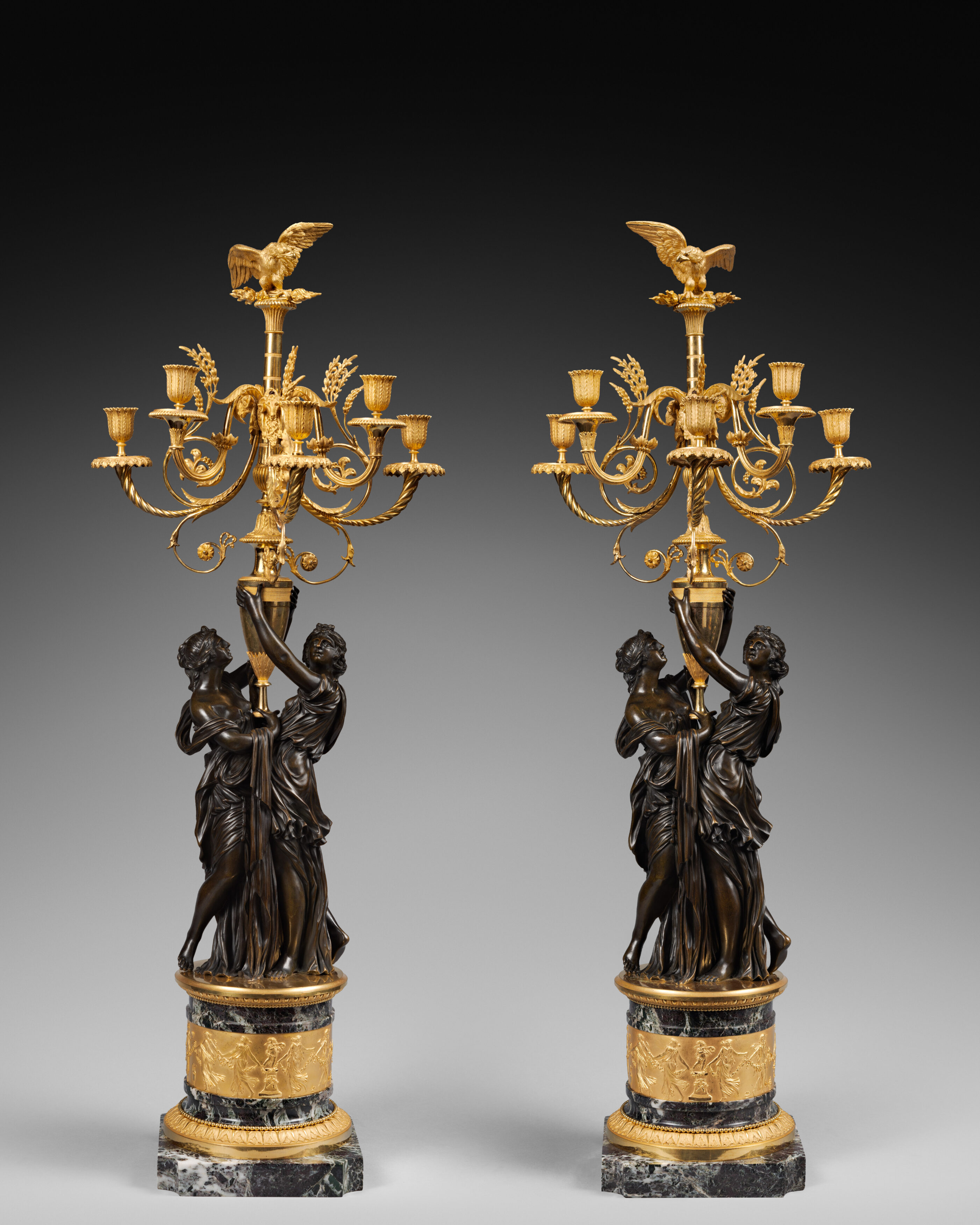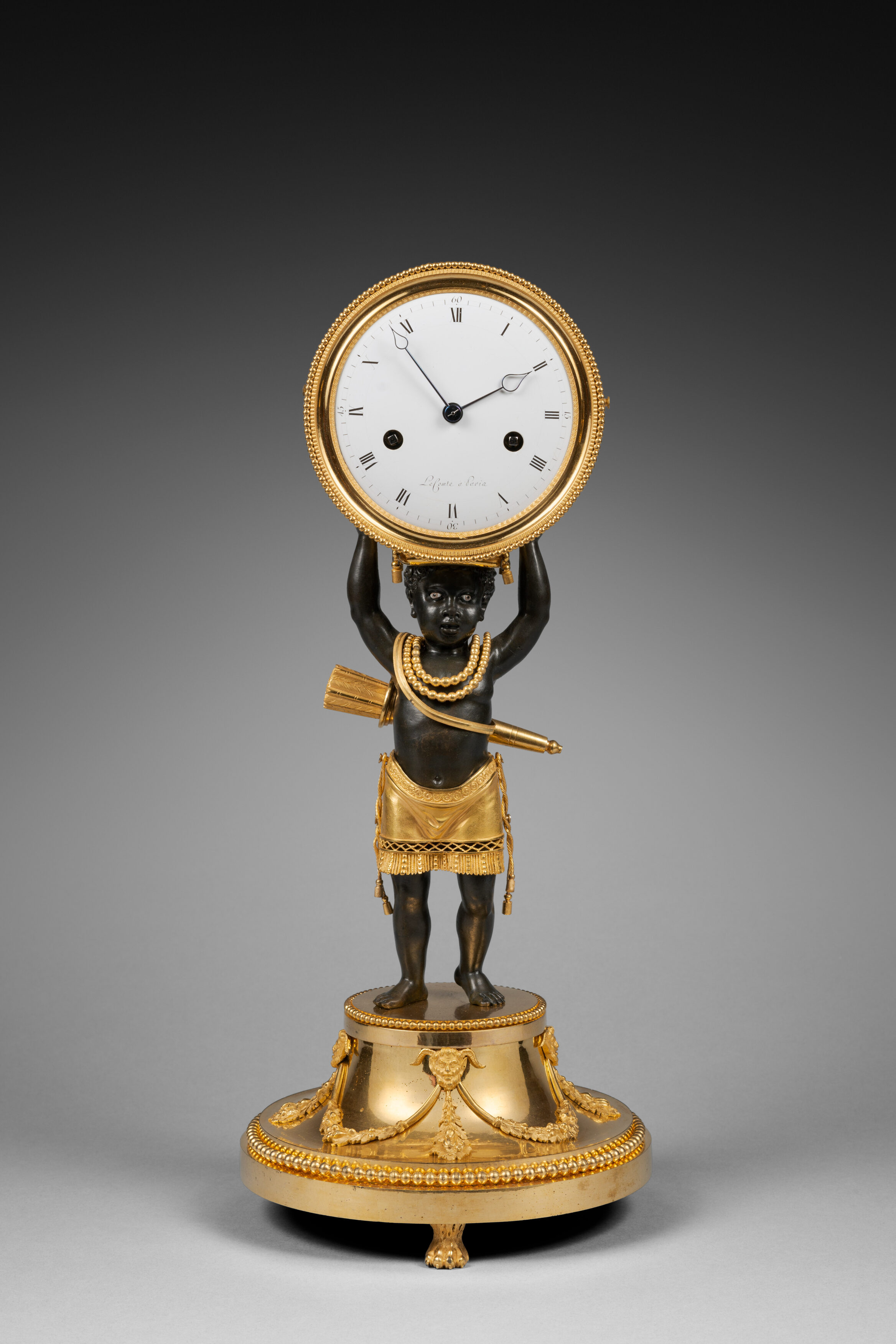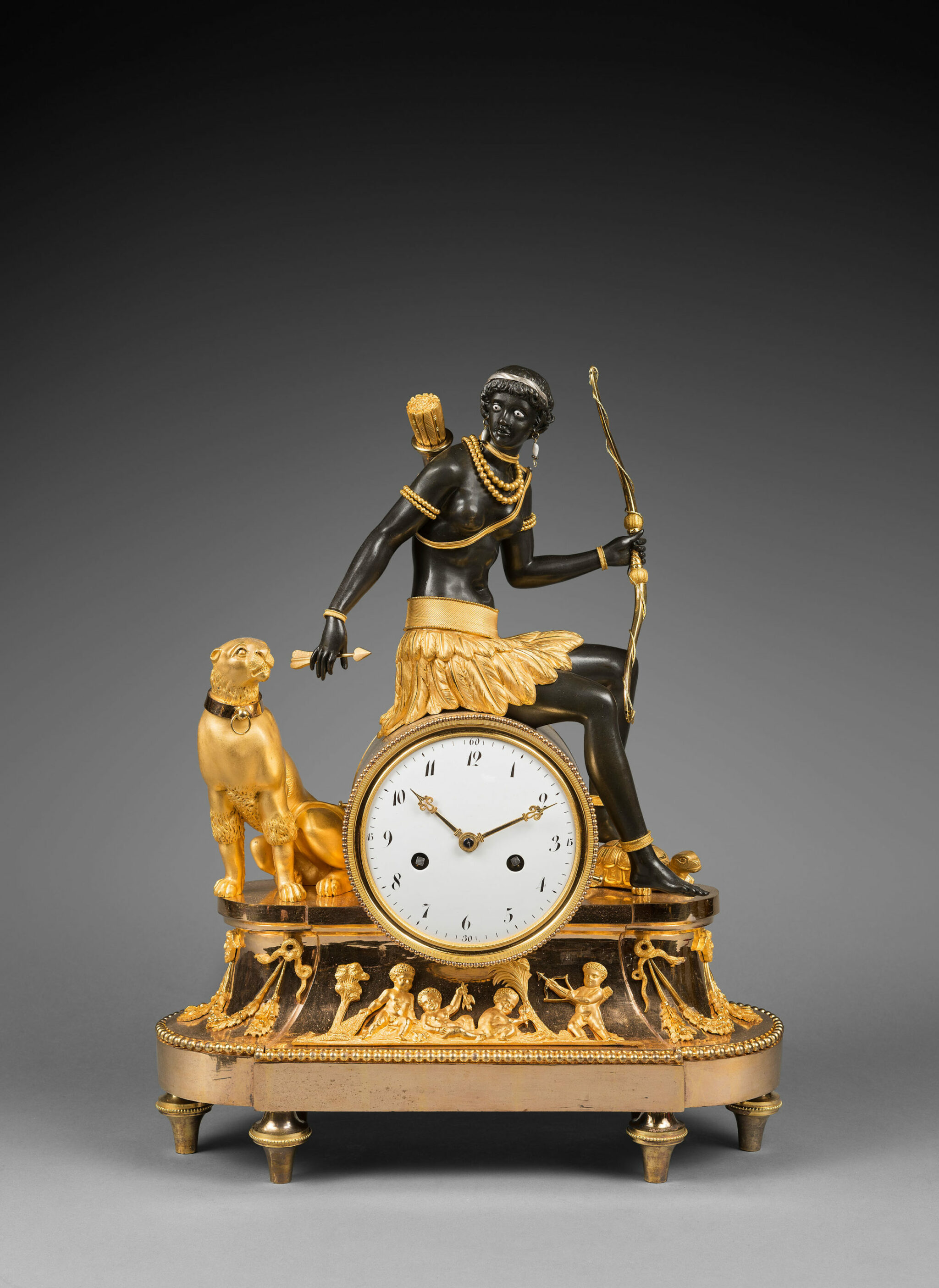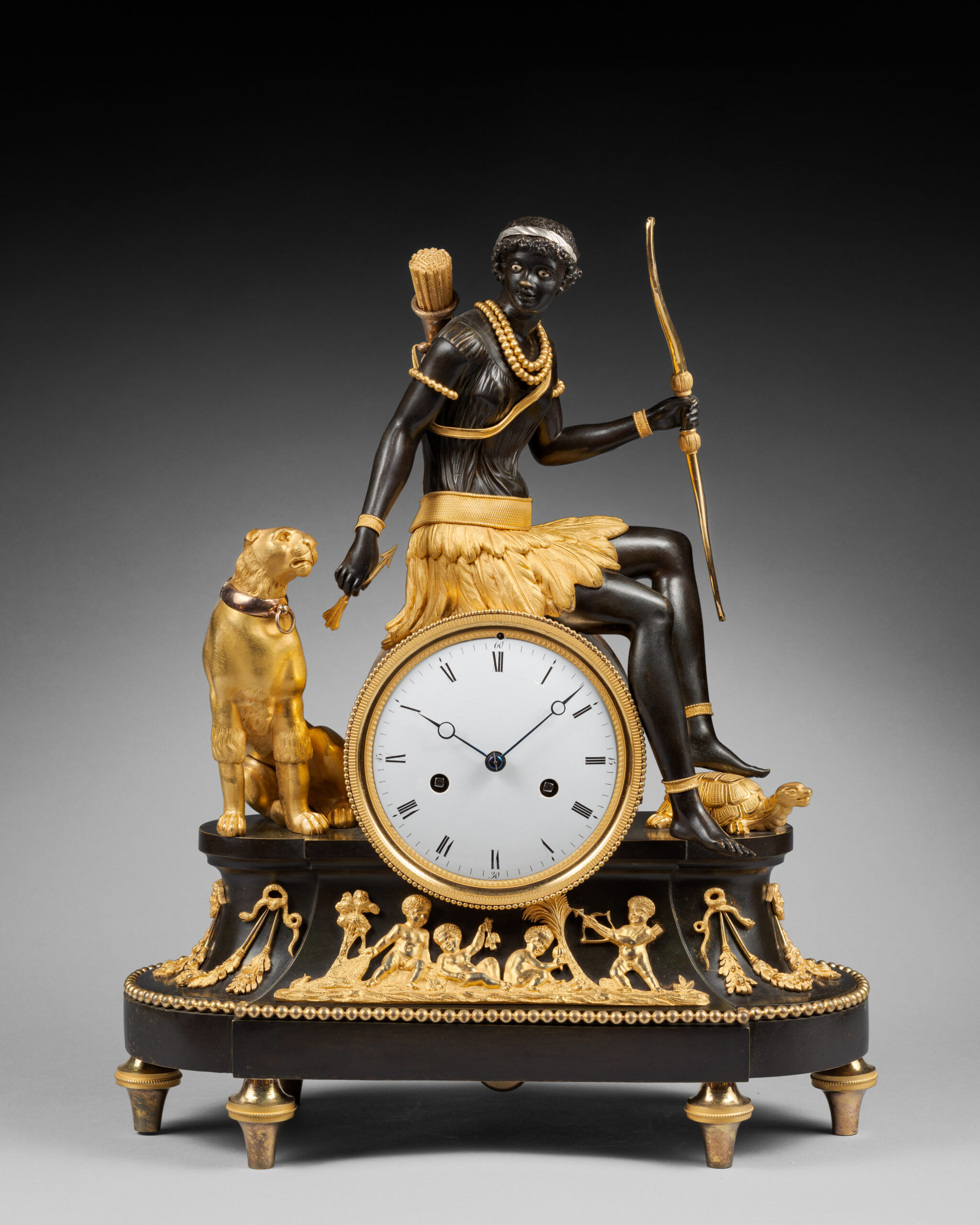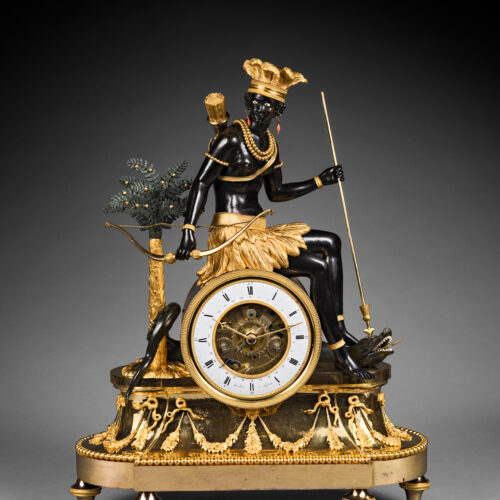Rare Gilt and Patinated Bronze Mantel Clock
with a Skeleton Movement
“The American Indian”
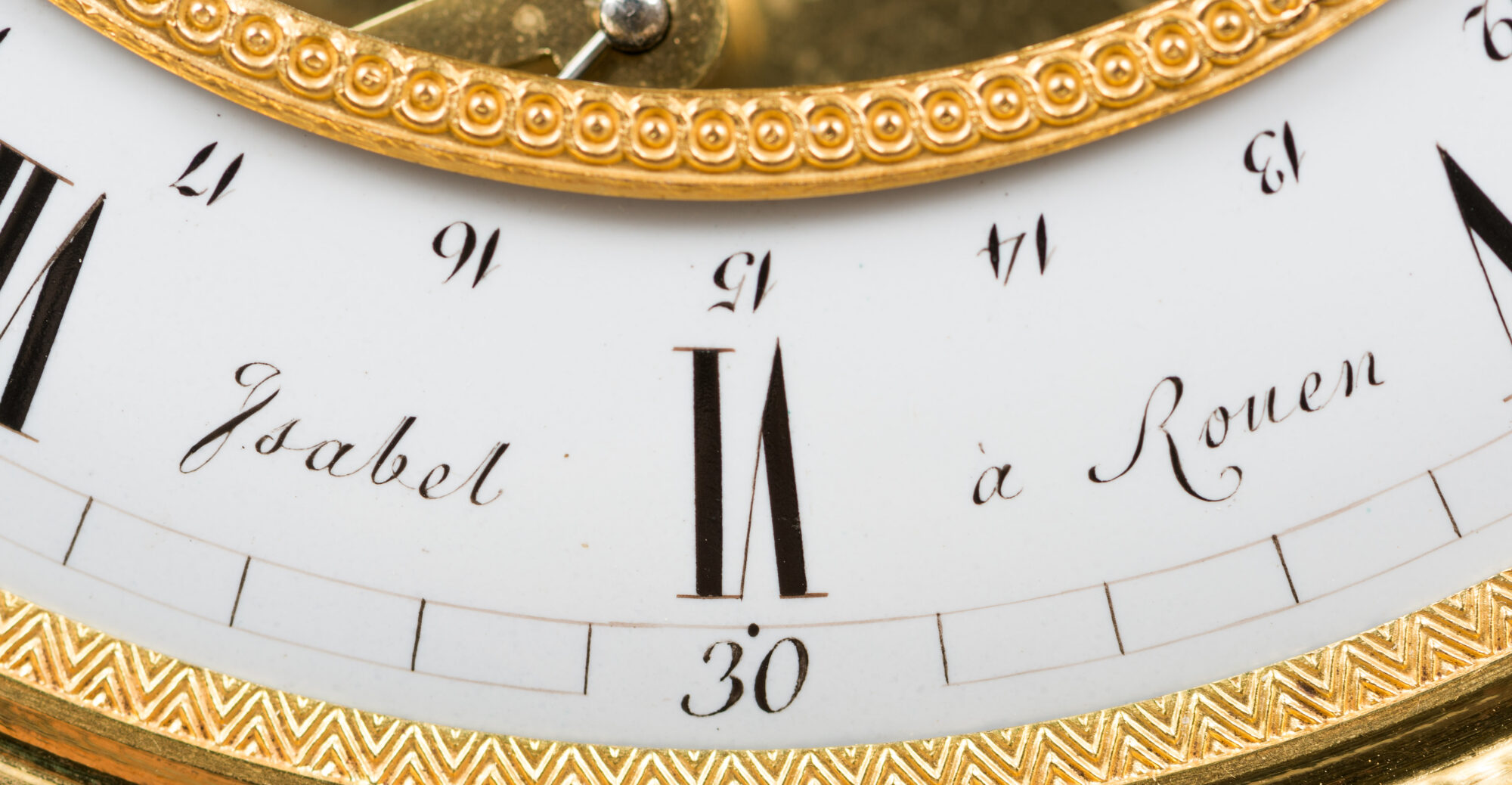
Dial signed “Isabel à Rouen” by clockmaker Monsieur Isabel
Case attributed to Parisian bronze caster Jean-Simon Deverberie
Paris, Directory period, circa 1800
The round enamel dial, signed “Isabel à Rouen”, has a cut-out that shows the mechanism of the clock. It indicates the Roman numeral hours and the Arabic numeral minute graduations and revolutionary date, graduated from 1 to 30, by means of three hands, two made of pierced gilt bronze and the third of blued steel. The gilt and patinated bronze case, attributed to Jean-Simon Deverberie, is very finely chased. The bezel is adorned with stylized bead friezes. The clock is surmounted by a very fine female figure depicting a seated black huntress wearing a feather loincloth with a quiver containing feathered arrows slung across her chest. She is coiffed with a feather headdress and has naturalistic enamel eyes. She is wearing jewelry including necklaces, ankle and arm bracelets and coral earrings. She holds a bow in her right hand and a lance in her left hand. Her left foot rests on the head of a Caiman, a kind of crocodile, whose tail is wrapped around a banana tree standing to the left. The figures are placed on a base that is mounted with serpent-tied floral garlands and a beaded border; the whole is raised on gilt bronze toupie feet.
Discover our entire collection of antique mantel clocks for sale online or at the gallery.
La Pendulerie is the specialist in fine and rare antique clocks, based in Paris.
The case design reflects the vogue for exoticism that prevailed during the eighteenth century and continued into the next century. It was inspired by the notion of the noble savage as treated by such writers as Rousseau, as well as by current events. Among them was the 1767 arrival in Tahiti of French explorer Bougainville, followed by that of Captain Cook in 1769. Accounts of the harmonious life of the South Sea islanders led people to question the shortcomings of European society. The notion of the noble savage inspired some of the greatest literary works of the period, including Daniel Defoe’s Robinson Crusoe (1719), Jonathan Swift’s Gulliver’s Travels (1724), Bernardin de Saint-Pierre’s Paul et Virginie (1787), and Atala (1801) by the Vicomte de Chateaubriand.
The original drawing of the present clock, known as “L’Amérique”, was registered in the year VII by Jean-Simon Deverberie (1764-1824), one of the most important Parisian bronze caster-chasers of the late 18th century and the first two decades of the 19th century. His workshop was located in the rue Barbette in 1800, the rue du Temple in 1804, and the rue des Fossés du Temple from 1812 to 1820. Deverberie’s original case design, today preserved in the French Bibliothèque Nationale, is pictured in Tardy, Les Plus Belles Pendules Françaises, 1994, pp. 246-7, as well as in D. and P. Fléchon, “La pendule au nègre”, in Bulletin de l’association nationale des collectionneurs et amateurs d’horlogerie ancienne, Spring 1992, n° 63, p. 32, photo n° 3.
An identical clock with a case by Deverberie and dial signed “Gaulin à Paris” is illustrated in Hans Ottomeyer and Peter Pröschel, Vergoldete Bronzen, 1986, p. 381, pl. 5.15.25. An identical case with dial signed Ridel à Paris is illustrated in Elke Niehüser, Die Französische Bronzeuhr, 1997, p. 148, pl. 239. An identical clock with dial signed Thiéry à Paris is shown in Pierre Kjellberg, Encyclopédie de la Pendule Française du Moyen Age au XXe Siècle, 1997, p. 351.
The theme of the noble savage inspired a number of clock cases. The first such model made by Deverberie, with movement by Furet and Godon, was “La Négresse”; it was presented to Marie-Antoinette in 1784. The present clock, made as a counterpart to “l’Afrique”, dates from circa 1800 and continued in popularity up until about 1815.
Jean-Simon Deverberie (1764 - 1824)
Jean-Simon Deverberie was one of the most important Parisian bronziers of the late 18th century and the early decades of the following century. Deverberie, who was married to Marie-Louise Veron, appears to have specialized at first in making clocks and candelabra that were adorned with exotic figures, and particularly African figures. Around 1800 he registered several preparatory designs for “au nègre” clocks, including the “Africa”, “America”, and “Indian Man and Woman” models (the drawings for which are today preserved in the Cabinet des Estampes in the Bibliothèque nationale in Paris). He opened a workshop in the rue Barbette around 1800, in the rue du Temple around 1804, and in the rue des Fossés du Temple between 1812 and 1820.
“Isabel à Rouen” is the signature of Monsieur Isabel, who was a clockmaker active in Rouen during the late 18th century. He may be the same M. Isabelle who in 1802 exhibited a system for compensating for the effect of temperature variations on the rate of clocks (see Tardy, Dictionnaire des horlogers français, Paris, 1971, pp. 170).
